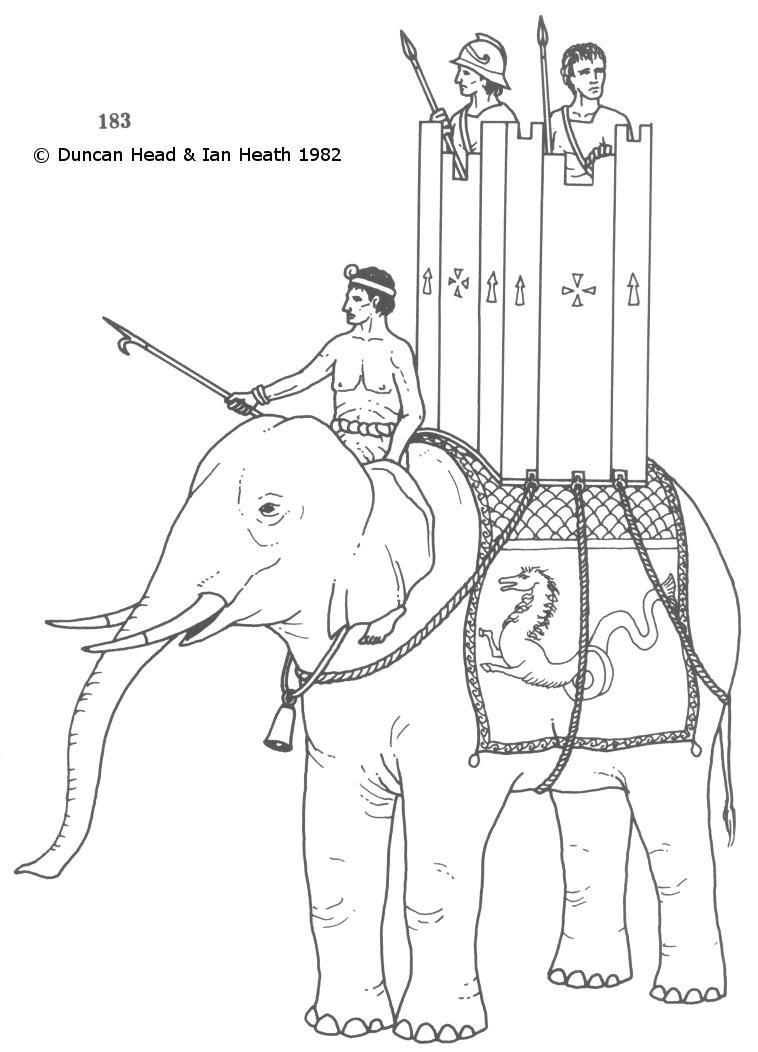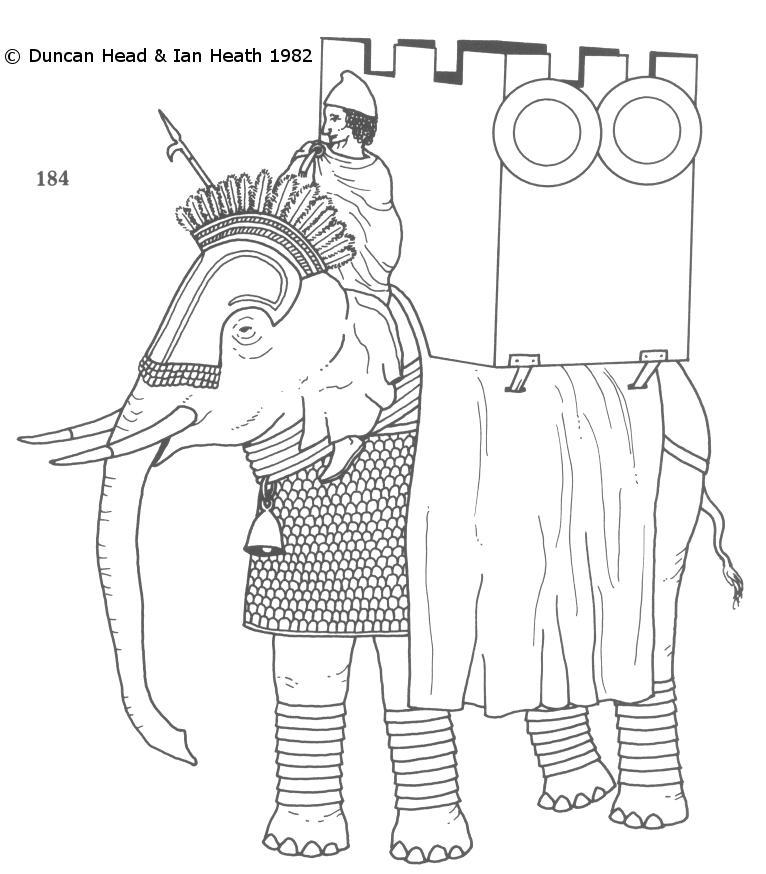Amazon Audible Gift Memberships

Create an Amazon Wedding Registry
ELEPHANTS WITH TOWERS
An extract from Armies of the Macedonian and Punic Wars
by Duncan Head, illustrated by Ian Heath

[Based on a Phalera with Bactrian War Elephant and Crew Going Leftwards. State Hermitage Museum, St. Petersburg. S-64]
183 and 184. ELEPHANTS WITH TOWERS
Plutarch’s Life of Eumenes refers to towers at the battle of Paraitakene, but H. H. Scullard has suggested this is embroidery by a later writer.
Certainly when Eumenes’ elephants were ambushed by Antigonos a few months later they were unable to reply to enemy missiles, which suggests a lack of missile-armed crew.
The first reliable references to towers are to Pyrrhos’ campaign in Italy, and he may have invented them. Early towers held two javelinmen.
These are shown by a Campanian plate depicting one of Pyrrhos’ elephants, by a Graeco-Bactrian silver disc on which figure 183 is based, and confirmed for Pyrrhos by Dionysios of Halikarnassos’ account of Asculum.
Towers were wooden, the Campanian plate suggesting light slats presumably over a heavier frame, and showing also a large round shield hung outside for added protection.
Cloth caparisons were often red, and this figure’s seems to have the central portion quilted to cushion the tower.
The bell round the neck is common, and Arrian says the tusks were reinforced with iron.
184 shows a later Seleucid elephant with armour and a larger tower.
It is based on a terracotta statuette of one of Antiochos I’s beasts at the "Elephant Victory", a broken bronze of an armoured elephant, and literary references.
The towers must have been larger as they now held three (Ailian) or even four (Livy, describing Magnesia) men.
Polybios mentions sarissa-armed crew at Raphia, Josephos mentions archers. Again the tower has shields hung outside, two each side, which may indicate a crew of four.
Supporting straps are not visible on the terracotta, and may thus have passed under the cloth hangings.
The hoops round the legs, shown on the terracotta, are probably to prevent hamstringing by enemy infantry, and may be leather.
The bronze statuette shows the plate headpiece and scale body-armour. Livy also mentions headpieces, while I Maccabees mentions "cuirasses" for Seleucid elephants.
Livy also adds crests; no illustration shows them, and the style shown here is hypothetical, based on that of figure 49’s horse.

[Based on a Terracotta Statuette from Myrina, Turkey, late 3rd century BC. A War Elephant Crushing a Galatian Warrior.]
Next: 185. AFRICAN ELEPHANT in Armies of the Macedonian and Punic Wars by Duncan Head and Ian Heath



